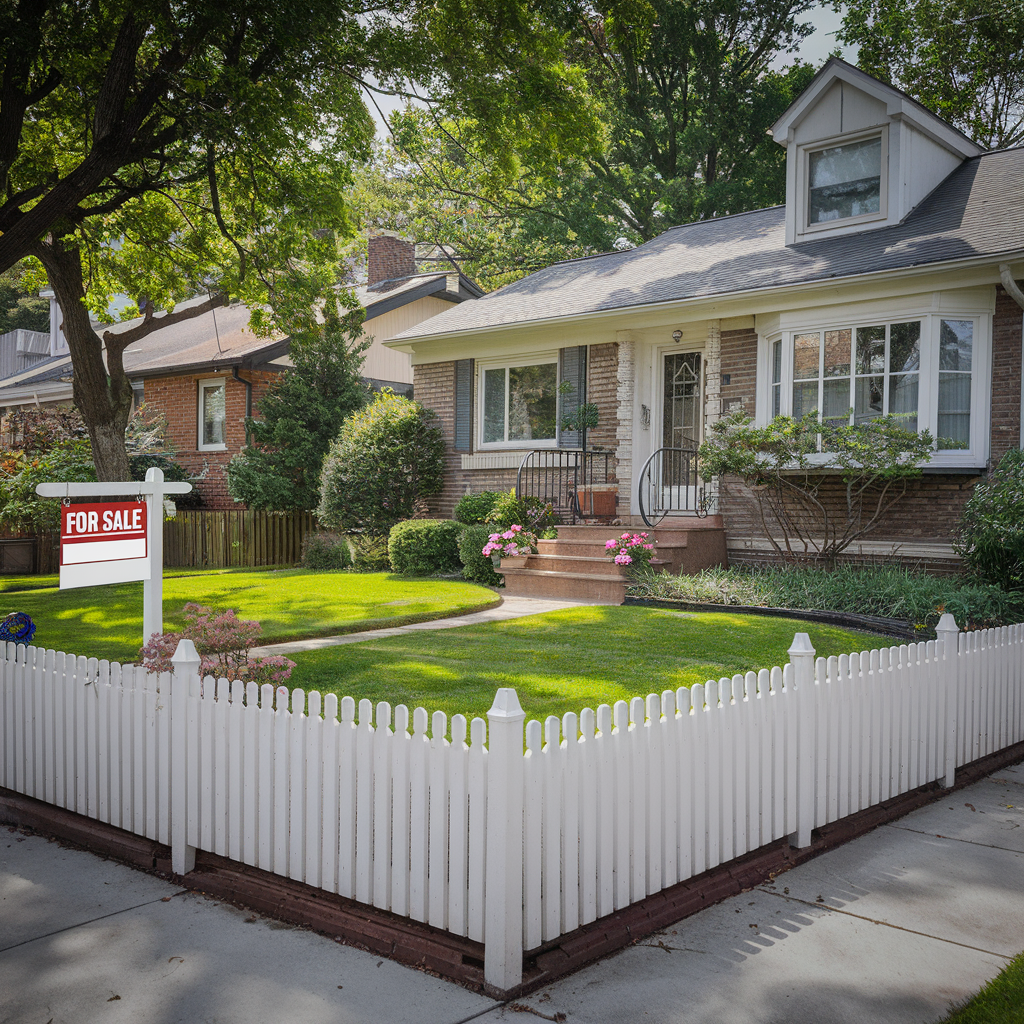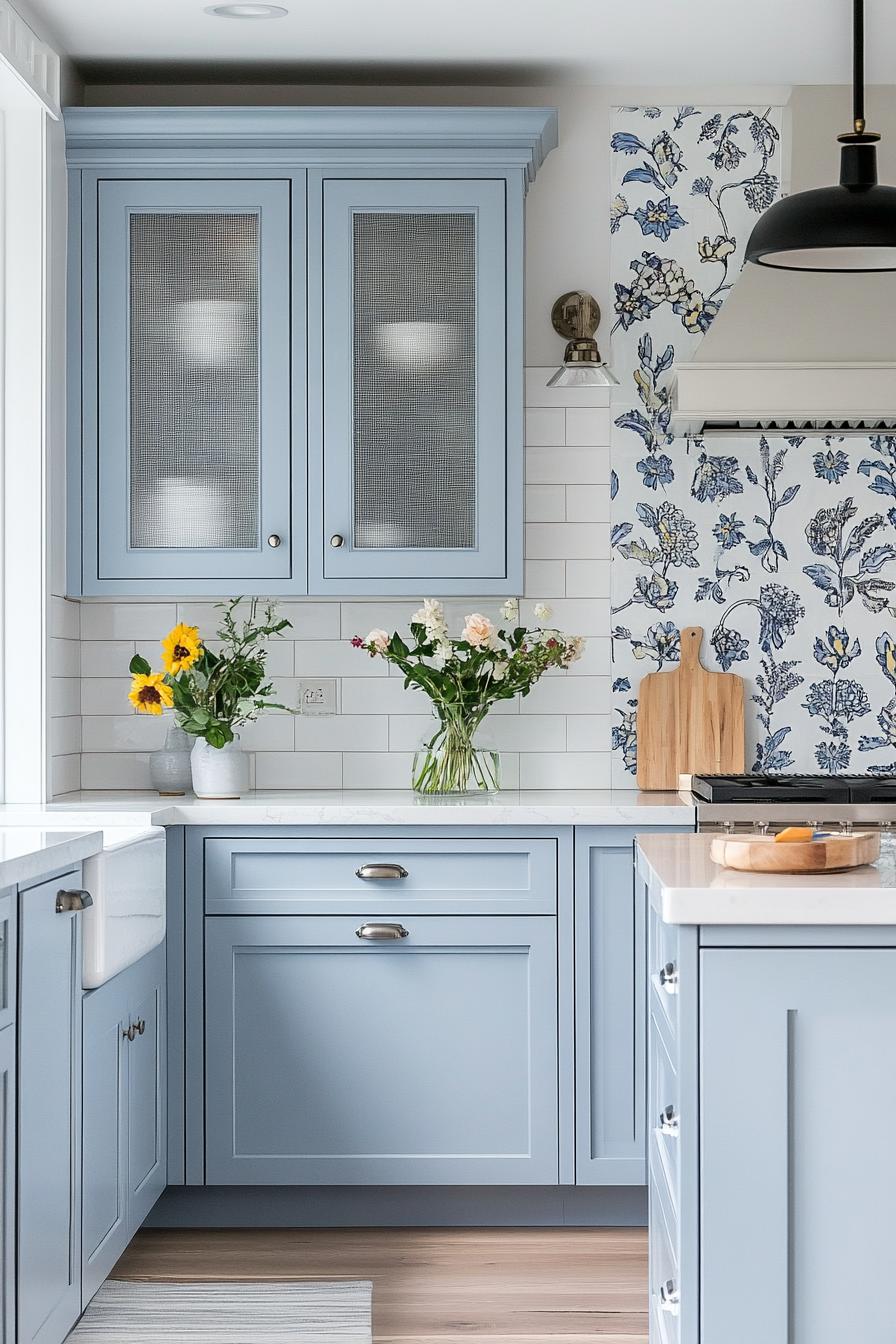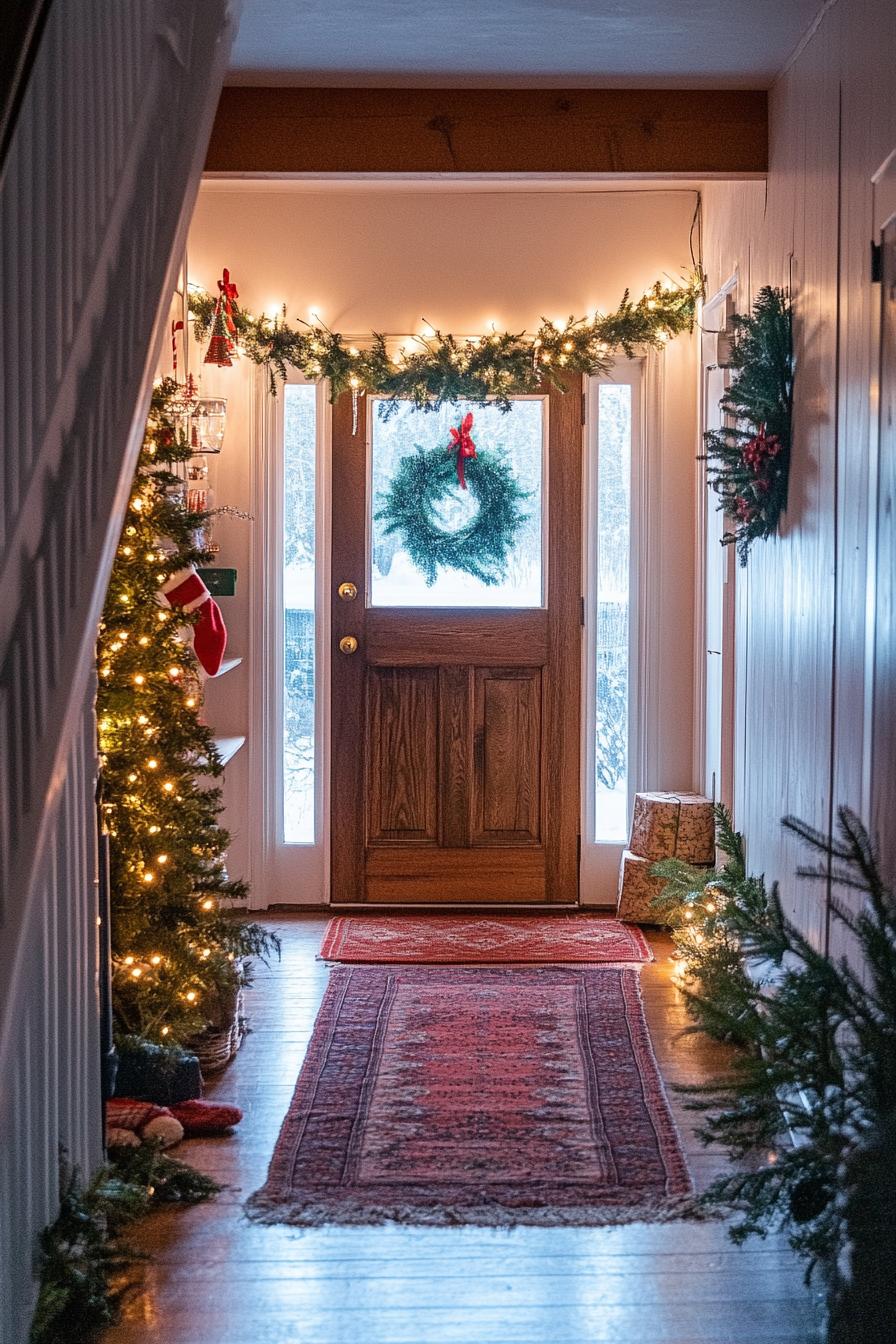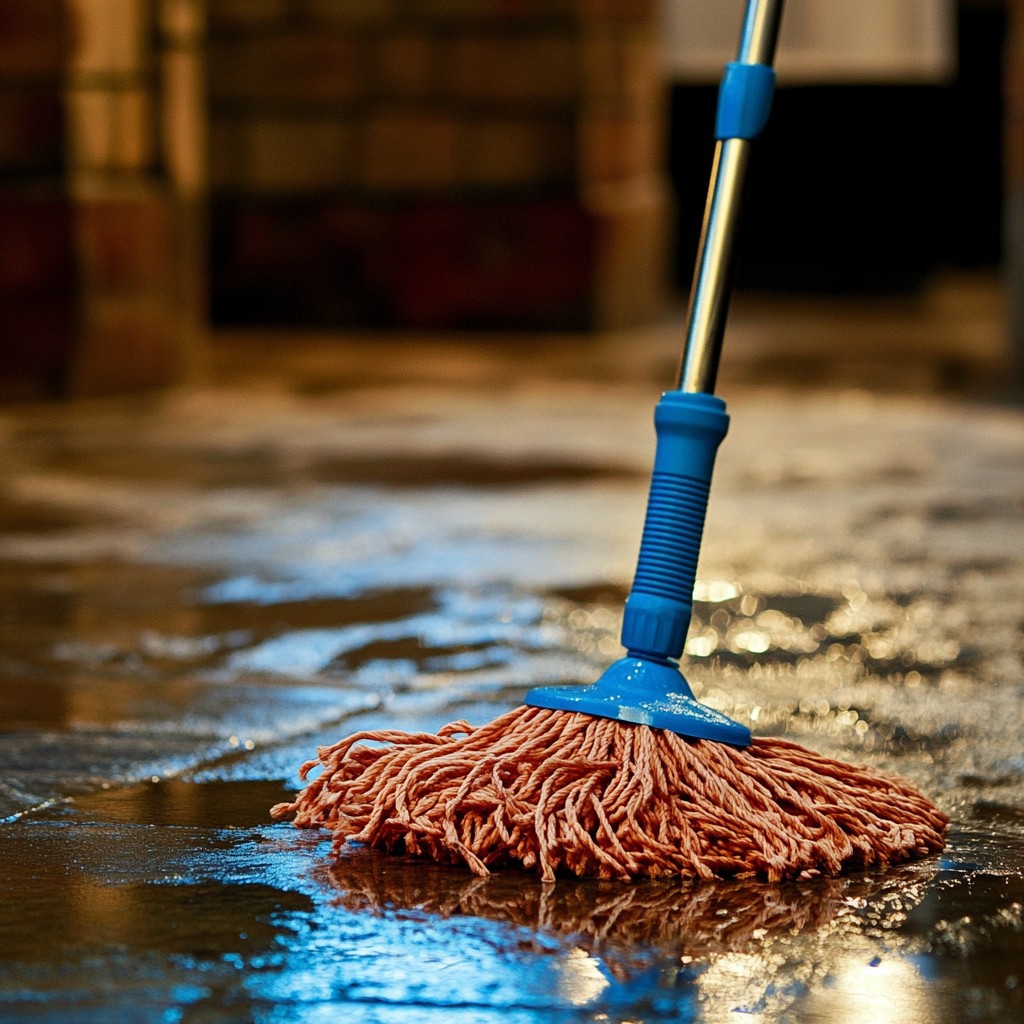Last updated on
Where you install the door sweep depends on the door type, which way it swings, and the sweep itself. Read on to find out all correct placements.
Typically the door sweep is on the inside of in-swinging doors and the outside of the out-swinging doors. Of course, there are more cases where this setup varies.
So the goal of this article is to once and for all define where the door sweep should be installed for the most optimal results — on the inside or the outside of the door.
Door Sweep Placement by Door Type
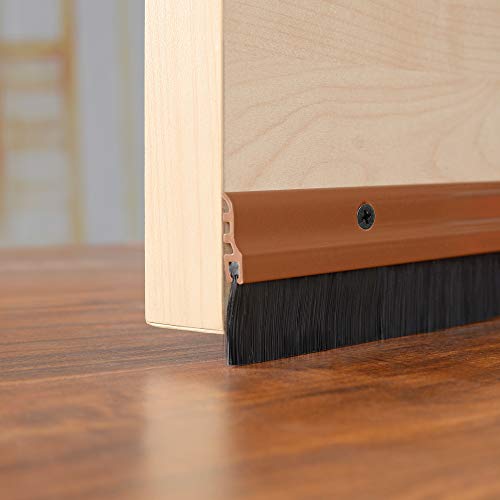
Door sweeps or under-door seals are jolly effective in keeping out cold draughts and warm air in. Additionally, they do a great job protecting from pests, dirt, smoke, water leaks, unwanted noise, etc. However, one ought to pay proper attention to the placement of the door sweep when installing one.
Is this your first time using a door sweep or door bottom? If yes, then you may wonder where a door sweep should go. Should it be on the inside or outside of the door? Well, the simple answer to this is that it will depend on the kind of door the sweep will be installed on and, on occasions, the type of door bottom or sweep you are using.
Exterior Doors
Door sweeps are most commonly used on exterior doors of a building, mainly to eliminate energy loss. Now, as to the placement of the sweep, it should be installed/fitted on the inside bottom edge of doors for all ‘in-swinging’ doors and on the outside bottom edge for all ‘out-swinging’ doors (there are a few exceptions, and we’ll mention them below as we go along).
Additionally, when it comes to exterior doors, you must see that the installed sweep does not cross the threshold when you open or close the door. Also, make sure to use a more durable and weather- and corrosion-resistant door sweep option (more on that shortly) for your exterior doors.
NOTE: Even with in-swinging exterior doors, some people actually prefer to install the sweep on the outside face of the door. If you don’t mind the not-too-visually-appealing aspect of this, this approach is actually useful in preventing snow and all varieties of pests and dirt from collecting underneath the door.
Interior Doors
Certain interior doors in your house need door sweep more than the others. For example, kitchen doors, living room doors, or doors of your master bedroom will benefit from having door sweeps installed on them. As for placement/installation: on the inside for in-swinging doors and the outside for out-swinging doors.
Certain door sweep types, such as the wrap-around door sweep or tubular door sweep, are manufactured or designed so that they will have a sweep on both sides of the door.
The wrap-around types are okay for both interior and exterior doors. However, if you are using a tubular sweep, make sure to use it on interior doors alone, as the materials used for this kind of door sweep are not suited to handle rough weather conditions.
In-swinging Doors
In-swinging doors are doors that swing into the house or a room. Many exterior or entryway doors are in-swinging doors, whereas interior or in-house doors can be either in-swinging or out-swinging, meaning they open outward. Follow the above-mentioned rule for the placement of your in-swinging doors, whether interior or exterior.
Out-swinging Doors
You will commonly find out-swinging doors inside houses at places and/or rooms without a threshold. This means that the gap between the door and the floor will usually be larger with out-swinging doors. So, make sure you keep that in mind when shopping for door sweeps for your out-swinging doors.
Door Sweep Placement by Sweep Type
When it comes to door bottoms, door sweeps, and under-door seals, you have a large variety of options to choose from. These different types have different characteristics, including different placement/installation procedures.
Automatic Door Sweep
By far the best (and often the most expensive) option, an automatic door sweep (or, more accurately, an automatic door bottom), make use of adjustable plungers that cause the seal at the bottom to drop or go up as you close or open the door. Depending on the gap between the door and the floor surface, the device will automatically adjust the seal’s distance or the gasket drops. Keep in mind that the surface-mounted types, the most common variety in automatic door bottoms (the others being ‘half mortise’ and ‘full mortise’), are installed on the push side of the door.
Brush Door Sweep
Brush door sweeps are an easy and popular option and are typically applied to the outside of exterior doors. The bristles of the seal keep away dust and debris and do a decent job when it comes to weatherproofing a door. Keep in mind, though, that this is neither the most efficient nor the most durable door sweep option available. The bristles will wear down and get damaged over time, and require replacement.
Self-adhesive Door Sweep
Like brush sweeps, the self-adhesive or self-stick door sweeps are not among the best or most durable options available. However, they are good when you want a quick fix for that draught in the winter. All you will need to do is peel off the paper from the back of the flexible plastic strip (that acts as the sweep) and press the adhesive tape into place. There is no drilling holes, no installation—meaning that it is also a suitable solution for renters.
Draft Door Sweep
Another good option is if you do not want to make any permanent changes to the door. The draft door weatherproof sweeps are made of rubber and two foam tubes. To install, cut the tubes to measurement fit them into the provided sleeves, and place them under the door. Due to the soft nature of the material, this type of foam draft sweeps can be used on all kinds of floors—concrete, tile, wood, linoleum, carpet, etc.
Snap-in Door Sweep
Now, if you are looking for a permanent and highly durable option, snap-in door bottoms or sweeps make for a great option, especially for your entry doors. The snap-in door seals can be used on metal, fiberglass, and wooden doors.
However, your door needs to have grooves in the bottom to use snap-in sweeps. This is because the sweep contains kerfs that actually slide into the bottom grooves of the door and hold the seal/sweep in place. Installation may require either professional help or good DIY skill on the homeowner’s part.
Strip Door Sweep
Strip door sweeps are a rather large category, and they are available in many different materials. Many blade door sweeps (refer below) can actually be categorized as strip sweeps. Most commonly, you will have a metal frame or bracket used to mount the actual strip sweep, such as an aluminum frame with vinyl, nylon, or silicone strips.
Blade Door Sweeps
Similar to strip door sweeps, blade door sweeps use a mounting bracket and a blade-like sweep to seal the gap underneath a door. Depending on your requirements, you can use different types of blades (plastic, brush, steel wool, or blades made of softer materials like silicone) for use with a bracket. You may also opt for multiple sweeping blades when you need a thicker door sweep.
Wrap-around Door Sweeps
Also known as U-shaped door sweeps/bottoms, wrap-around door bottoms equip a door with a double layer of protection since they contain sweeps both on the inside and the outside of the door. This is a long-term and highly durable solution often used to soundproof the door, and you may need professional help for installation. Most wrap-around models can also be painted to accent or match the color of the door and/or the floor surface.
Door Sweep Placement by Floor Surface Material
When shopping for your door sweep, you must always consider your floor surface material. Different sweep blades or strip materials are suitable for different surfaces, and a wrong choice can cause considerable damage to your floor surface.
Hardwood Floors
Sweeps made of foam, silicone, nylon, or other softer materials are okay to use on hardwood floors. You can also use brush sweeps, tubular sweeps, and almost all kinds of automatic door sweeps. Just make sure that the material your door sweep is made of will not be hard on the wood and would not cause scratches, etc. So, stay away from plastic, steel wool, or tough rubbers like neoprene.
Carpeted Floors
Again, softer materials like foam, silicone, soft plastic, etc., are ideal for rugs and carpeted floors. However, make sure to take into account the thickness of your rug or carpet before deciding on the material, and always choose something that will not cause any friction with the carpeted floor surface. Automatic door bottoms are a wise investment if you have an expensive carpeted floor.
Concrete Floors
All types of door sweeps will be okay to use with concrete floors. Even the commonly tougher materials (such as steel wool) used for door sweeps are not tough enough to cause damage to your concrete floor or create screeching noises, etc.
That said, we still recommend that you stay away from materials like neoprene. The latter is okay for exterior doors with a wide enough threshold, but not for bare concrete floors.
Recap

